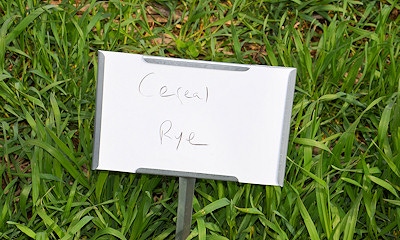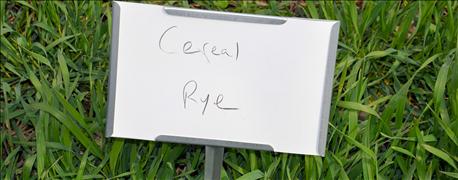
Strong winds all across Indiana picked up any loose soil in its’ path on some days this spring. The wind was so strong one Saturday afternoon and the soil was blowing so hard in some areas that a friend actually called me to tell me to come get a picture of it. The field that was generating the dirt blowing across the road and limiting visibility had just been spring chisel-plowed. By the time I got there, the wind subsided enough that I didn’t get a good picture, but it was clear that soil erosion had occurred and was still occurring.

BUILD BACK, NOT TEAR DOWN: This cover crop on Mark Lawson’s farm near Danville will help build back soil health on a field that has been conventionally tilled in the past.
A team from the Natural Resources Conservation Service in Indiana, on behalf of the Indiana Soil conservation Partners, put together thoughts on soil erosion. Here are 3 key points.
1. Got soil erosion?
As you start your spring planting operations, now is a great time to do a little soil erosion scouting. As you drive across your fields, take note of the location or start of gullies. Without a standing crop, these areas should be easy to identify. Note all the areas that may need to be addressed.
2. Is there an amount of soil erosion that is “tolerable”?
For years we have been talking about the soil loss tolerance rate (T) which is the maximum rate of annual soil loss that will permit crop productivity to be sustained economically and indefinitely on a given soil.
As land prices continue to rise, can we accept soil erosion of any amount?
3. Time for new thinking
With today’s biology-building soil health systems, such as cover crops and never till, we should stop thinking about “tolerable soil loss” and start thinking about “soil building”. We should be thinking about soil regeneration, not the amount we can lose and stay sustainable. For more information, contact your local NRCS office (nrcs.usda.gov/wps/portal/nrcs/main/in/contact/local/)
About the Author(s)
You May Also Like




